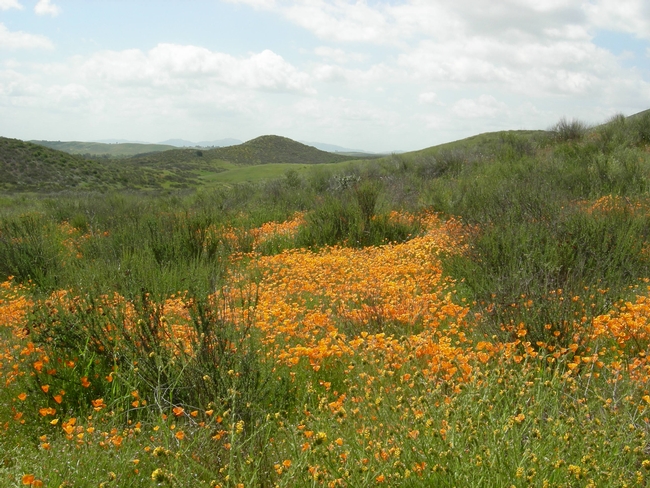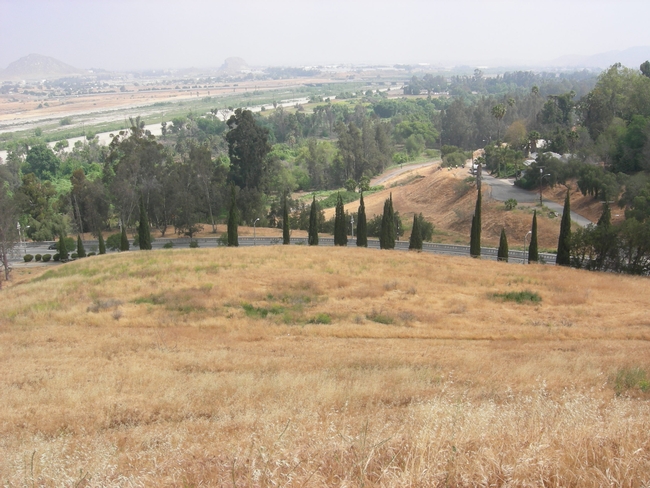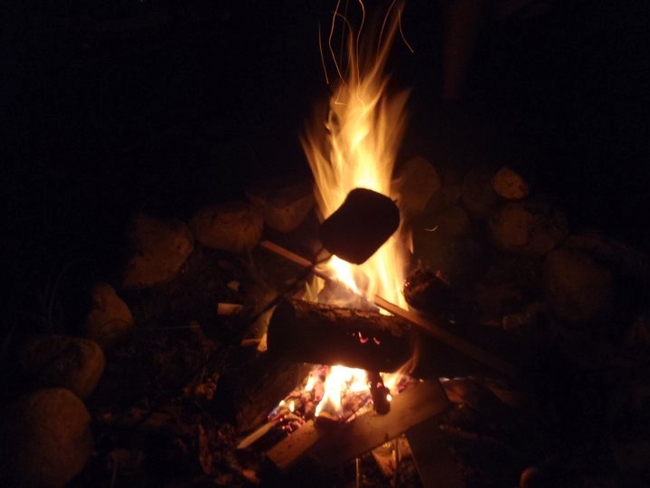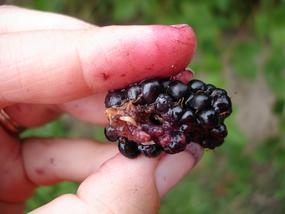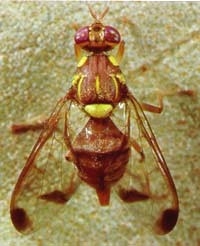Posts Tagged: exotic
Air pollution is ravaging what’s left of California’s native coastal sage scrubland
Because of its gentle topography and proximity to coastal cities, however, two-thirds of the coastal sage scrubland has already been converted to housing or farming, said Edith Allen, UC Cooperative Extension specialist in the Department of Botany and Plant Sciences at UC Riverside. The remaining coastal sage scrub is threatened by an invasion of exotic species and nitrogen deposition.
“Nitrogen deposition is caused by nitrogen oxide emissions from cars and industry. In addition, another plant fertilizer, ammonia, is emitted from agriculture and livestock operations,” Allen said. “The airborne emissions eventually settle on the soil surface, throwing the fragile coastal sage ecosystem out of balance, even 100 miles or more away from the emission sources.”
The combined deposition of nitrate and ammonia is up to 30 kilograms per hectare per year in the Los Angeles air basin. In contrast, in areas without the basin's air quality problems, about 2 kilograms are deposited per hectare each year.
“Growers fertilize small grain fields with 30 kilograms per hectare, so this represents a substantial nitrogen input,” Allen said.
Further compromising the coastal sage scrubland, grass species from the Mediterranean have been accidentally introduced into the ecosystem by activities associated with a booming agriculture industry, population growth, grazing and road building. The high nitrogen favors these exotic annual grasses.
“We've made a bad problem worse,” Allen said. “The exotic grasses are able to take up nitrogen at a faster rate, grow faster than native plants and displace them.”
In recent years, Allen worked with graduate students Robert Cox and Kristine Preston to understand vegetation-type conversion rate and recovery in coastal sage scrublands in western Riverside County. They compared information gathered by the Forest Service 85 years ago with 2002 California Department of Fish and Wildlife maps updated to 2009 using Google Earth. The analysis included measures of climate, topography, vegetation, land use, nitrogen deposition and fire in 151 study sites.
The analysis showed that 24 percent of the sites that were mapped as annual grassland in 1930 had recovered to coastal sage scrubland.
“In those parts of the county that did not receive much nitrogen, the native vegetation was able to recover,” Allen said. “Overall, the study shows that coastal sage scrubland conservation and restoration efforts are most likely to be successful on sites with low nitrogen deposition and low invasion of exotic grasses.”
For that reason, it only makes sense to try to restore coast sage scrub in areas where nitrogen deposition is low. For broader conservation, the best option is improving air quality.
This research determined that regions where nitrogen deposition is above the level of 11 kilograms per hectare per year will spontaneously convert to grassland.
“We have a value that can be used by regulatory agencies,” Allen said. “Right now, air pollution regulations aren't strong enough to protect the environment.”
Today, most passenger cars emit very low amounts of nitrogen oxides. The bigger problems in the Los Angeles Basin are diesel trucks and pollution generated in the ports of Los Angeles and Long Beach.
“Our population is growing. The volume in the ports is growing. As we come up with better, cleaner technologies, we're staying at the same pollution levels,” Allen said. “People need to realize that we will need lower nitrogen emission levels to protect our natural plant communities.”
The research was published last fall in the journal of Global Ecology and Conservation.
An initiative to maintain and enhance sustainable natural ecosystems security is part of the UC Division of Agriculture and Natural Resources Strategic Vision 2025.
Protect the environment by leaving firewood at home
Memorial Day weekend, traditionally considered the beginning of California's camping season, is right around the corner. If you are preparing for an upcoming trip, you can help protect California's forests by buying firewood from a local source near the campsite rather than bringing it with you.
When people move wood from place to place, they may also be moving invasive insects and diseases that threaten California's landscape and wildland trees. The goldspotted oak borer, which is devastating native oaks in San Diego, likely hitchhiked from Arizona in firewood. The polyphagous shothole borer, walnut twig beetle and thousand cankers disease, and the pathogen causing sudden oak disease, all continue to spread to new areas on infested wood chips, plant debris or wood moved for woodworking or firewood.
Over the past year, the California Firewood Task Force has asked the public to "buy it where you burn it" — that is, don't bring wood from home when you camp, do use wood from local sources, and leave leftover wood at the campsite for the next camper. Even if wood does not appear to have borer holes or other evidence of pests, don't assume that the wood is pest free. Be on the safe side and don't move it.
The California Forest Pest Council established the task force in 2011 to educate Californians about what they can do to prevent movement of invasive pests in wood. The task force developed a web site, put up billboards across California, sponsored children's activities at parks and fairs, encouraged campgrounds to sell only local firewood, gave presentations across the state, and developed best management practices, posters, and other information to engage the public.
For more information visit www.firewood.ca.gov/.
Too Much of a Good Thing
Bougainvillea, a genus native to South America has found a home in many, many gardens.. “Discovered” by a French naturalist Dr. Philibert Commercon in 1768, he named the plant after his friend and ship’s admiral Louis-Antoinede Bougainville who sailed around the world between 1766 and 1768 with Dr. Commercon on board. By the early 1800’s two species were introduced to Europe while Kew Gardens distributed their propagated specimens to the British Colonies throughout the world.
The many species are relatively pest and disease free but are sensitive to frost and if they survive will behave as deciduous shrubs, dropping their leaves in the winter with new leaves emerging in the spring. As this shrub/vine is an exotic beauty, it isn’t the most hardy choice for all of Solano County. It does very well in Sunset zone 17 (most of Vallejo and Benicia) and can be a good “container on wheels “ choice for Fairfield, Davis and Dixon’s zone 14. In zone 9, Vacaville, it would take a lot of effort to protect this shrub from the frequent winter frosts and cold. If you can manage to give this shrub the environment it needs, you will be grandly rewarded with an exuberant mass of color. Although the true flowers are tiny, they are surrounded by intensely colorful bracts in red, purple, and magenta. Other milder colors are available, but for the most part I see only the intensely colorful species in our environs.
So now to my dilemma, I have had too much of a good thing. I inherited a number of well established bougainvilleas (aka bougies) when I moved into my home in Glen Cove. Two of the shrub/vines dominate the front garden. One has climbed up the garage wall and onto the roof below the 2nd story. Another is near the property line on the other side of the garage. The wall climber has required quite vigorous pruning (hacking) every year just to keep it in bounds. The 2nd grows so lushly it topples over once we get a good rain storm. I prop it back up and its none the worse for wear, except that it will fall over again and again until the rain’/wind storm subside in the spring.
Our son has been providing the big ladder pruning help each year until he moved out of the area. Don’t think this was an incentive to leave, at least hope not. So my husband and I have climbed up the big ladder and hacked at the long canes trying to corral them each year. Enough, late this past fall, we got out the loppers and cut the whole shrub down to about five feet tall. As spring has progressed we have been thinking what should we do with this shrub. We love the color but the maintenance is just too much. So , I had an ah ha moment. Let’s do an espalier and keep it to a height I can easily reach with my pruners. Of course, we are giving up the big drama, but we are also avoiding the “waiting to happen” problems the use of really big ladders invite.
Also, we decided to bungee cord the other bougie and attach it to an eye-hook a couple of years ago. This has worked wonders, no more falling bougie!
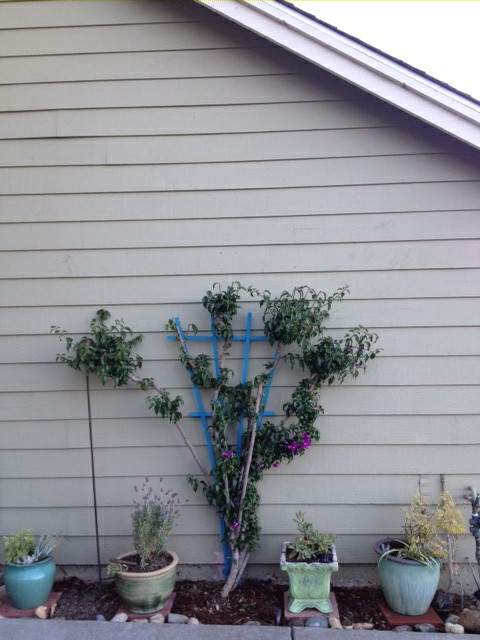
"Bougie" . (photos by Trisha Rose)
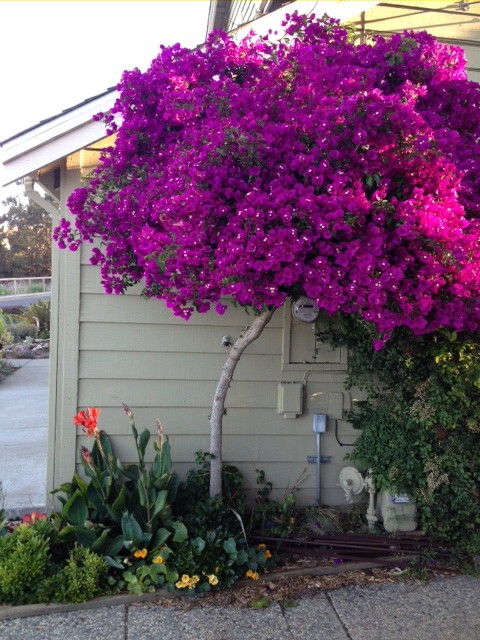
Watermelon-colored bracts.
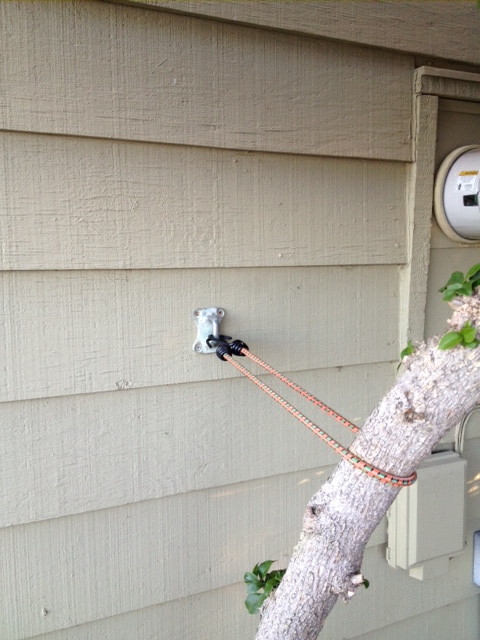
A "bougie" bungee!
Pests present border threat
"Whether they know it or not, every person in the country is affected by this, whether by the quality or cost of their food, the pesticide residue on food or not being able to enjoy the outdoors because beetles are killing off the trees," said Mark Hoddle, an entomologist specializing in invasive species at the University of California, Riverside.
Springs rains blamed for sudden oak death increase
Guy Kovner, The (Santa Rosa) Press Democrat
The level of sudden oak death infection in Sonoma County and other parts of the Bay Area tripled over last year's rate, according to a survey conducted in June in nine counties from Humboldt to Monterey.
“It's a red flag,” said Matteo Garbelotto, head of UC Berkeley's forest pathology laboratory.
What sustainability means in agriculture
Amanda Radke, Tri-State Livestock News
Amada Radke reported on a panel discussion on agricultural sustainability, which took place at UC Davis in September. The panel included farmers, activists and the dean of the UC Davis College of Agriculture and Environmental Sciences Neal Van Alfen.
“There is so much debate and controversy among naturally-raised foods and conventionally-raised foods, and that's too bad, because one isn't always better than the other,” said Van Alfen. “If we don't make our system work, we are all in trouble. We have to figure out how to feed the world sustainably. Research is so important to help farmers reduce input costs and work to make organic foods more sustainable and efficient.”
Invasive melon fly trapped in Fresno County
CDFA officials have trapped a single male melon fly in a Fresno vineyard, sending shivers down the spines of local farmers who produce its target crops, including cucumber, eggplant, squash and tomatoes, according to a report on the CBS Channel 47 news.
The melon fly is native to Asia, but has spread to other parts of the world, including Africa and the Pacific Islands. Melon flies were first found in California in 1956 and have been captured sporadically over the years, but all infestations have been successfully eradicated. Just last year, eight melon flies were found in Kern County. Trapping last month determined that the Kern County population was eradicated, the story said.
Reporter Tony Botti spoke to UC Cooperative Extension farm advisor Richard Molinar about the potential economic damage of a melon fly infestation to small-scale farms. If the pest is found in greater numbers, CDFA will likely impose a quarantine, which stops farmers from moving any of their products out of the area.
"If they are not able to sell, they are going under," Molinar said. "They’ll take a loss this year and many won't be able to survive a loss."
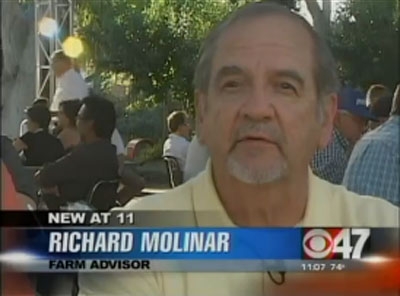
UCCE farm advisor Richard Molinar speaks about melon fly on the CBS Channel 47 news.


